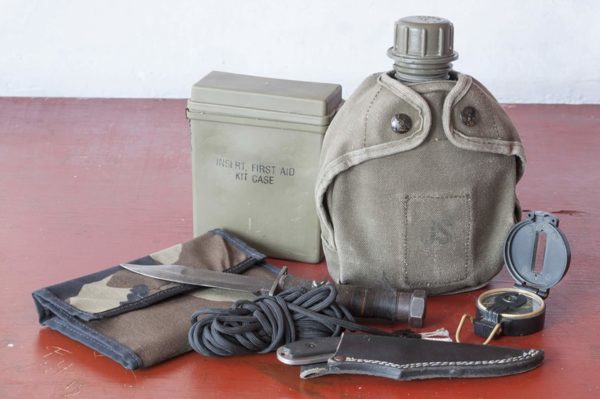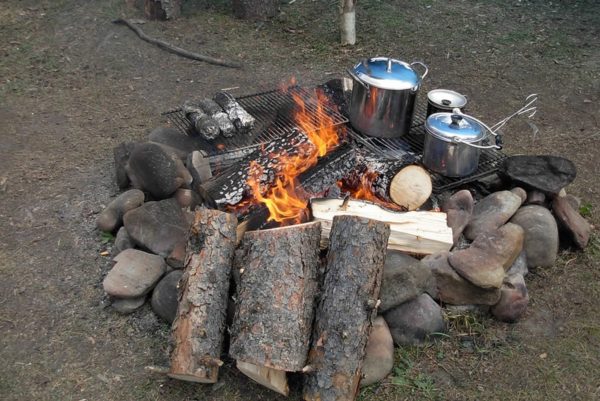Considerations for a Bug Out Bag Backpack
When it comes to a bug out bag backpack, there’s a spectrum of options. At one end, there’s literally a non-descript bag, into which you throw survival gear and get out of Dodge. At the other end is a bug out bag, or more exactly a backpack, designed for emergency get out of town scenarios and pre-loaded with survival gear. This article focuses on the bug out bag itself (alternatively called a bob, bug out pack, go bag, bugout bag, survival bag or GOOD bag), which most of the time is actually a backpack.
In many, if not most emergency scenarios your bug out bag backpack is crucial. You want something to carry everything you need to survive in circumstances where there’s no time other than grab your stuff and go. Now “carry your stuff” might mean fifty feet from a car, or it might mean a trek of fifty miles. In whatever case, the bag or pack still needs to make it possible to have all the right stuff and for you to carry it the required distance. Choosing the right pack (bug out bag) is important.
The Survivalist 101 website offers many different bobs, many pre-loaded, some for D-I-Y. Whatever the case, it helps to understand some of the factors that go into using these packs and how that might affect your choice.
Let’s call them “Pack Factors.” They’re somewhat dynamic, meaning that changing one factor often means changes in other factors. For example, if there is an increase in the distance you need to go with the pack, then the weight you can carry may have to decrease.
Bug Out Bag Backpack Factors
- Volume capacity of the pack
- Your weight carrying capacity
- Distance to be traveled with the pack
- Length of time to live out of the pack
- Climate and terrain where the pack is used
- Inherent durability of the pack
Bug Out Bag Backpack – Volume capacity
A crucial limiting factor on a bug out bag backpack isn’t the weight they can hold, but their volume capacity. Survival/outdoor gear, clothing and food are more often bulky than heavy. Most packs list their total volume capacity, usually in cubic inches or liters, for example 1500 cubic inches/25 liters (small), 5200 cubic inches/85 liters (large).
These numbers probably don’t mean much to most people, except where they translate into “small,” “medium,” or “large” and even then it’s experience that tells you the small size is a day pack (no survival gear to speak of) and the large size is pretty much for multi-day expeditions.
An important piece of the volume picture is how the pack is segmented, if at all. Segmentation – pockets, enclosures, sections – help organize a pack but they also limit the size of individual articles.
Your weight carrying capacity
It’s obvious that in terms of strength and endurance people are different, which means that how much weight people can carry and for how long varies. Conditioning matters, of course, but it’s not simply walking or hiking condition. A bug out bag backpack use a lot of upper body muscles, many of them unaccustomed to sustained use; many people can hike many miles unburdened, but put a 40-pound pack on their back and it doesn’t take long for the range to drop.
In an emergency bug out situation, you may or may not know how far you have to go to be safe, but it’s helpful to have some idea of how much weight you can carry and for what distance. You need to know your pack is also up to the task.
Distance to be traveled with a pack
Most people can carry a bug out bag a few miles for one day, say 3-7 miles. What hikers call a “day trip” might not be comfortable if you’re in poor shape, is still doable even with a fairly heavy bug out bag backpack. If you need to go farther, say 10 miles or more, then you’re looking at possibly more than one day or a strenuous push.
That’s when pack weight may become a significant factor. Unless you’re an experienced backpacker and know how to pace yourself, people often have few problems with pushing themselves for one day, but a second, third or more days put demands on muscles and psyche that are quite different. As with how much weight you can carry, it helps to know your limits.
Length of time to live out of the bug out bag backpack
If you’re on a bug out trail that leads to your survival hut or off to a safe destination, then the amount of time you need to live out of the bug out bag backpack is probably known, say a day or two. On the other hand, if you’re likely to completely rely on what’s in the pack to survive for many days, it’s obvious the pack has to carry enough supplies and usually means a bigger pack.
Climate and terrain where the pack is used
In most cases, you’re going to bug out from own turf and head for somewhere at least in the region. That means you can select gear to fit the specific climate and terrain, including the bug out bag backpack.
For example, when it comes to wet climates not all packs are waterproof. Some are “water resistant,” which usually means they’ll eventually become soaked and moisture will penetrate the inside.
Sometimes even “waterproof” packs have untreated seams or folds where water can collect and leak inside. Unless specially designed, no bug out bag can stand a dunking in a stream or mud hole. This might matter if, for example, you’re in a very wet climate such as the coastal northwest, or a swampy terrain such as along the Gulf Coast.
Climate and terrain also affect you personally, of course, since rugged terrain and continual bad weather (and bad weather can include hot or dry) will test your mental and physical strength. You want a bug out bag that won’t add to the test, or better still, will help you overcome the climate and terrain. For example, if you know you’re going into desert country, a bob with a water bladder might be a necessity.
Inherent durability of the pack
The one thing you don’t want a bug out bag to do is burst halfway to your destination – or break a strap, or strip an important zipper. In short, the durability of the bug out bag backpack has to match the expected use. One time use is not particularly demanding, especially if the distance isn’t great and you’re not living out of the pack.
Longer distances, longer times, rougher terrain put strain on bags – that’s when strong fabrics, good stitching, reinforcement and good design can make a difference. The same is even truer if multiple uses are in the picture.
The fallout of all factors
Putting all the pack factors together: One part of the story includes a couple of old favorites – “you get what you pay for” and “buy the best you can afford at the time.” There are other things you might not have considered, such as making sure the pack/bob you choose can “go the distance,” meaning have the size, quality and convenience to help you get to where you need to go to survive.
Tutorial Sections

Read More

Read More

Read More

Read More

Read More

Read More

Read More

Read More

Read More

Read More

Read More

Read More

Read More

Read More













